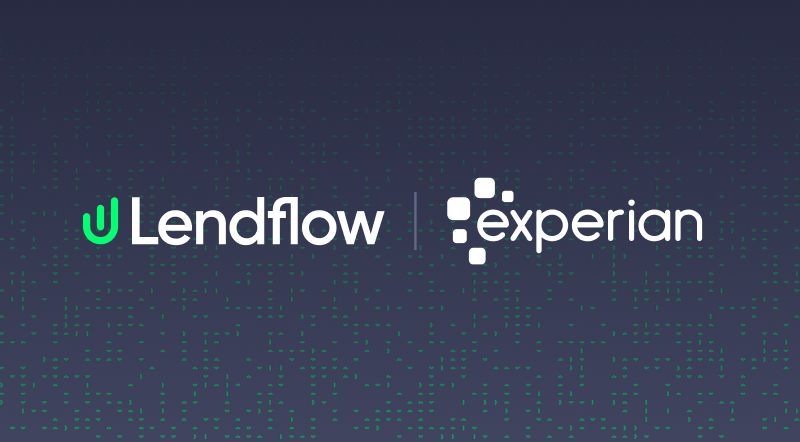[.green-span]How to Choose a Company with Seamless Multi‑Product Loan Integration[.green-span]
.png)
Define your multi‑product loan integration goals
Before evaluating vendors, establish clear integration objectives to inform your decisions. Financial services integration consolidates multiple financial products into a single platform, streamlining operations and enhancing customer experiences.
Your goal-setting process should include:
- Loan product scope: Identify loan types (term loans, revolving credit, BNPL) and specific compliance mandates (KYC, AML, GDPR) for your target markets.
- Volume and speed targets: Define realistic processing volumes, approval timeframes, and API response requirements.
- Evaluation framework: Use a worksheet listing required products, KPIs, and success metrics to facilitate objective vendor comparisons.
Modern lending platforms can automate the entire lending process, making clarity in your automation and integration needs essential for vendor proposals.
Identify must‑have features and compliance checkpoints
Successful multi-product loan integration relies on identifying essential technical features and regulatory requirements from the start. Look for platforms that support current needs and future growth.
Essential features include:
- API-first architecture: Seek robust REST APIs, comprehensive documentation, and SDKs for seamless integration.
- AI-driven decision engines: Focus on solutions with automated underwriting, document extraction, and adaptable risk assessment capabilities.
- Real-time data processing: Ensure support for instant decision-making, dynamic pricing, and real-time reporting.
Loan origination systems in 2025 typically include pre-configured integrations with credit bureaus, payment processors, and compliance tools. Compliance requires adherence to KYC, AML, GDPR, and more, so ensure vendors can demonstrate regulatory compliance.
Use structured evaluation tools like compliance blueprints to align data sources, regulatory needs, and audit trail requirements with vendor capabilities.
Research and shortlist integration vendors
Thorough vendor research lays the groundwork for successful partner selection. Gather market intelligence from various sources for a complete picture of available solutions.
Your research should cover:
- Market analysis: Review vendor websites, product data, case studies, and testimonials to understand capabilities and customer satisfaction.
- Financial evaluation: Capture pricing models (subscription, transaction-based, hybrid), SLA terms, uptime guarantees, and existing partnerships.
- Performance benchmarking: Create scorecards weighing API performance, AI accuracy rates, compliance certifications, and customer support quality for objective comparisons.
The lending landscape is evolving, with nearly 85% of traditional banks partnering with digital lenders to expand their offerings. Additionally, platforms and marketplaces process 30% of global consumer purchases, highlighting the need for vendors with marketplace integration experience.
Assess technical and AI capabilities
Evaluate technical and AI capabilities to ensure the platform meets performance expectations. This assessment should combine documentation review with hands-on testing.
Your technical evaluation should include:
- API performance testing: Conduct latency tests, error-rate analysis, and load testing in sandbox environments to verify that response times meet your requirements (typically under 500ms).
- AI accuracy validation: Test document extraction and underwriting algorithms with real data to confirm classification accuracy rates of 90% or higher.
- Integration architecture review: Examine API documentation for versioning, rate limits, error handling, webhook support, and security protocols.
AI's role in modern lending is critical; 93% of digital lending platforms use AI-powered underwriting to enhance decision speed and accuracy. Assess AI capabilities by testing sandbox endpoints and verifying classification accuracy (≥ 90%).
Pilot the solution and compare results
Conducting a focused proof-of-concept (PoC) provides concrete evidence of vendor performance prior to final decisions. A well-structured pilot minimizes risk and generates actionable data.
Your pilot program should include:
- PoC execution: Design a short-term pilot with clear success criteria, realistic data volumes, and defined testing scenarios.
- Metrics collection: Measure success indicators such as API latency, error rates, compliance audit logs, and user experience scores.
- Scope management: Define PoC success criteria upfront (e.g., ≤2% manual overrides, <500ms API latency) to prevent scope creep.
Industry best practices suggest that a focused PoC can be completed in 2-4 weeks, allowing thorough testing without delaying implementation.
Frequently Asked Questions
What is multi‑product loan integration and why does it matter?
Multi-product loan integration consolidates various loan types onto a unified platform, eliminating operational silos and accelerating time-to-market for new products, thus enhancing customer experience and enabling cross-selling while ensuring regulatory compliance.
How can I compare API performance across vendors?
Conduct comprehensive latency tests in sandbox environments, measuring response times for critical operations. Look for consistent sub-500ms response times, error rates below 2%, and robust error handling under various load conditions.
What compliance standards should I look for?
Prioritize vendors supporting regulations like KYC, AML, and GDPR. Ensure they provide audit-ready logs, data encryption, and compliance reporting tools, and verify their certifications match your target markets.
How long does a sandbox pilot typically take?
A well-structured sandbox pilot usually lasts 2-4 weeks, covering setup, data testing, loan flow validation, and performance benchmarking, allowing thorough evaluation while maintaining project momentum.
Can I switch providers later without rebuilding my entire stack?
Choosing a vendor with modular, API-first architecture reduces vendor lock-in risks. Modern platforms support standardized integrations that preserve user interfaces and data pipelines, though some integration work and data migration costs may arise.
How does AI improve data extraction and decisioning in a multi‑product context?
AI enhances lending operations through automated document processing, real-time risk scoring, and consistent decision policies. Platforms can reduce manual review requirements by up to 70% while maintaining accuracy rates above 90%.
What support does Lendflow provide during integration?
Lendflow offers dedicated engineering support throughout integration, including API documentation, integration playbooks, and sandbox environments for testing, along with hands-on assistance with technical setup and performance optimization.













.png)

